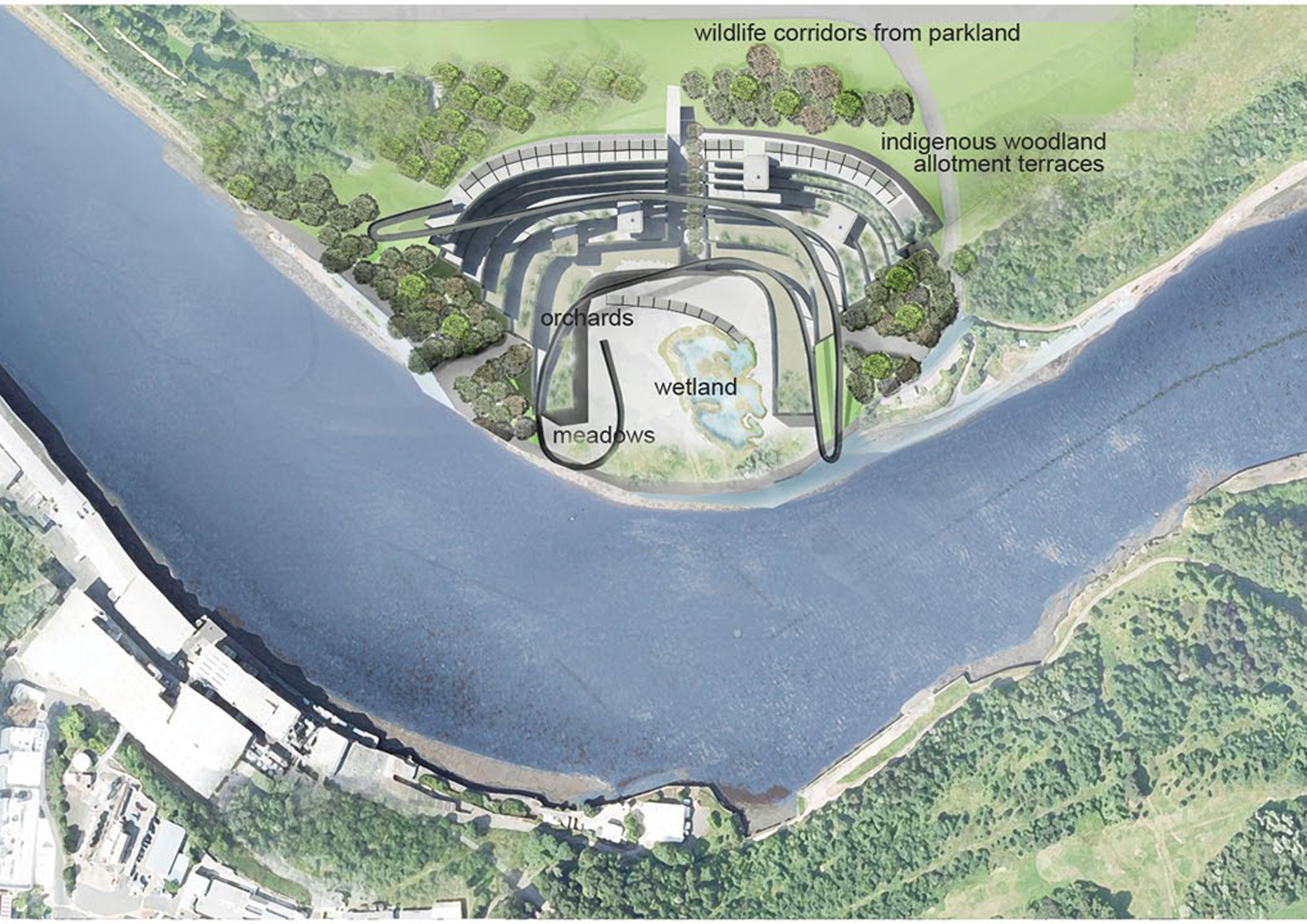As the 2011 Integrated Habitats Design Competition is getting launched, I’m looking at the winning entries from the 2010 competition in a series of posts.
Matripolis, which won the runner up prize, is a designed community for 500 people created by Paul Jones and David Dobereiner. The design is based on terracing of an old industrial shipyard sitting along a bend in a river with the goal that every resident can step outside their home into a “rich realm of biodiversity”. The terracing curve around in a ‘U’ shape with a community area in the center while the slopes merge with the parkland and each terrace level ends at a graded slope creating a connection to the surrounding areas for people and wildlife. The overall design encourages integration of all species, wildlife and humans alike as well as encouraging social space for the residents. In addition to integrating species, the design aims to integrate work and living by providing homes as well as shops, restaurants and light industrial. Also included are community gardens and greenhouses to provide food for the residents. The entire community is closed to cars and structured for walking and biking and contains a connecting ramp throughout the community.
Throughout the community are many integrated nature spaces including wetlands, forest groves, meadows, orchards and allotments. These spaces are designed to attract native species which have been displaced due to a loss of habitat. The inner part of the community is connected to the surrounding parkland with a series of small wildlife corridors, between the buildings. The goal of which is to create a sense of Walden, but instead of the isolated cabin in the woods it is instead within higher density dwellings.
This overall design is a fantastic idea for this space and could be a good case study for other sites situated on slopes which could make use of a terrace system. The integration of habitat is also a great idea, but the design could have benefited greatly from including an analysis of the surrounding parkland and river. While the river is addressed for energy it’s not addressed for habitat which is an opportunity for shoreline habitat improvement and also from a design aspect of making the river a larger feature of the community design. The habitat design could also benefit from a more in-depth look into specific species needs, how they would move throughout the space, what size habitat they require as well as how the different habitats are connected. Another aspect that would be beneficial for this design is how the allotments or community gardens can interact with the other habitats. Food gardens benefit greatly from pollinators and improving pollinator habitat in conjunction with urban farming is a valuable opportunity.
Read more about Matripolis and download the full PDF submission.








